How to Teach Division: Tips from a Math Tutor
How to teach division to elementary school students who are struggling. Tips from a math tutor for parents.

Author
Amber Watkins
Published:
Oct 2024
Key takeaways
- How you teach division varies by grade level.
- While long division is typically introduced in 4th grade or 5th grade math, you can begin teaching the principle of division in earlier grades.
- Math games, like DreamBox, can benefit children who are struggling to divide.
“My child has been doing so well in school… until they started learning division. What happened?”
“My child hasn’t learned division yet, but teaching division is scary. Can you help us?”
“My students love to multiply, but they dread having to divide.”
These feelings are often expressed to me as a math tutor by parents and fellow educators.
Some parents are eager to learn how to teach division to a beginner. Others would love help learning how to teach division to struggling students. And everyone can use some awesome division resources to help guide us.
Together we will break down my favorite tutoring strategies for teaching divison by grade level. These strategies can be used by both parents and teachers to teach beginners and struggling students. Each strategy will include practice activities, helpful tips, and division resources for kids. Finally, we will discuss why math games can benefit children who are struggling to divide.
Let’s begin!
How to teach division to Kindergarten & 1st grade
You don’t have to wait for division to be introduced in school to teach the concept of division at home. Pointing out how we use division in everyday life is a great introduction to teaching division.
Introduce division using items in the house
Dividing makes sure items are dispersed in a fair and even way: everyone gets the same amount. This is a concept your child will understand and probably love. Who doesn’t like when things are fair?
When teaching online, I usually use pictures to teach division. However, because you are helping your child at home use objects found around your house to introduce division to your child.
Cereal, candy, or playing cards work perfectly for this.
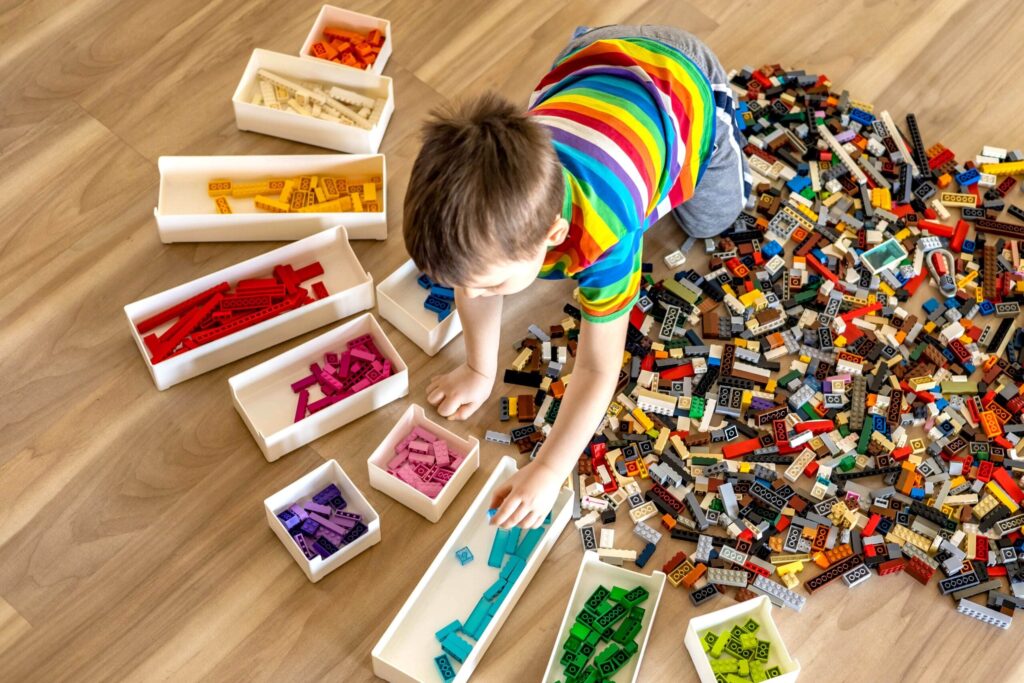
Helpful Tip! Reinforce learning by saying, “When we divide eight pieces of candy between us, how many pieces do we both get to make it fair? [Let your child count the pieces]. Four! Great job!”
Access more math practice with DreamBox
Turn math into playtime with DreamBox Math
DREAMBOX MATH
Get started for FREE today!

How to teach division to 2nd grade
By second grade, or even younger, your kids are probably learning to do tasks that inherently teach division. For example, cooking or counting money. Lean into the concept of division as you teach these basic tasks for everyday life.
Associate division with counting money
As you teach your child about the value of coins and money, it would be a great opportunity to teach division. How? Show your child $1 can be divided into:
- 4 quarters
- 10 dimes
- 20 nickels
- 100 pennies

I’ve found asking questions and then saying the division sentence helps your child associate division with money. Ask questions like:
“How many quarters make one hundred cents? (100 ÷ 25 = 4)”
“How many nickels would equal one dollar? (100 ÷ 5 = 20)
Helpful Tip! Children who struggle when counting by 25, 10, or 5 in this activity would benefit from practicing repeated addition and skip counting.

The math program that drives results
Get started today!
DreamBox adapts to your child’s level and learning needs, ensuring they are appropriately challenged and get confidence-building wins.
How to teach division to 3rd grade
In third-grade math, division is formally introduced. The year before in second-grade math, they started learning multiplication. One of the key concepts to iterate when teaching division is that division is the opposite of multiplication.
Practice multiplication facts & their opposites
As your child advances to third grade, they will learn multiplication facts. Help your child become strong multipliers. This is the biggest step in how to teach division to grade 3 students.
Third grade is also the year your child should learn that division is the opposite of multiplication. How do you teach this concept to your child? Provide a few examples for your child to see:
Multiplication 3 x 4 = 12
Division 12 ÷ 4 = 3
Helpful Tip! When helping your child with this activity, encourage them to start by writing a multiplication sentence first, then the opposite division sentence is easier to create.
Use picture models to divide numbers
Using picture models is a great way to help your child visualize division problems. Because division starts with a larger number and breaks it apart into smaller pieces, start with a larger model and see if your child can divide it into fair and even groups.
For example, this picture model has a total of 12 hearts. Encourage your child to divide the hearts into equal groups. They will probably end up doing something like this:
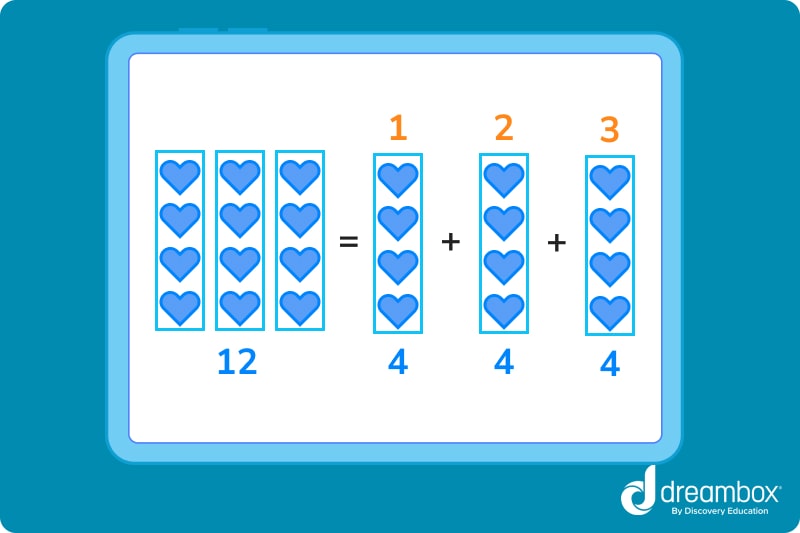
Try this! Create picture models like the one above to test your child’s knowledge! Draw pictures of a certain number of shapes and ask your child to circle the shapes to make even groups. Then ask your child to help create a division problem based on the shapes they circled.
How to teach division to grade 4 and 5
Welcome to the world of long division! As your child progresses through elementary school math, division problems become more complex. Here are my top tips for teaching division to upper grades.
Help your child label the parts of a long-division problem
The first step to learning how to solve long-division problems is to identify the parts of the problem and label them. The parts of a division problem include:
- Dividend – the number being divided
- Divisor– the number going into another number
- Quotient– the answer to the division problem.
Take the following long division problem and have your child label the parts of the problem as either the dividend, the divisor, or the quotient.
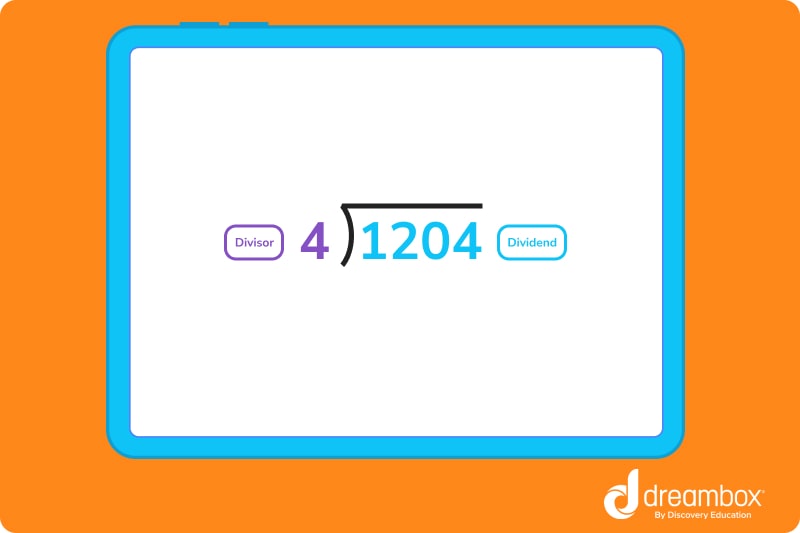
Helpful Tip! In my tutoring sessions, I find it helpful to spend extra time practicing the parts of a division sentence because it is one of the harder concepts for children to learn. Be willing to spend more time practicing, so your child can easily set up a long-division problem.
Practice the long division steps
The next step in how to teach long-division is to help your child learn the steps to a long-division problem.
The steps to long division are:
- Divide– Divide and place the answer on the top
- Multiply– Multiply the number placed on the top by the divisor
- Subtract– Place your answer under the dividend and subtract
- Bring Down– Bring down the next number
- Repeat– Repeat the division process with the new number
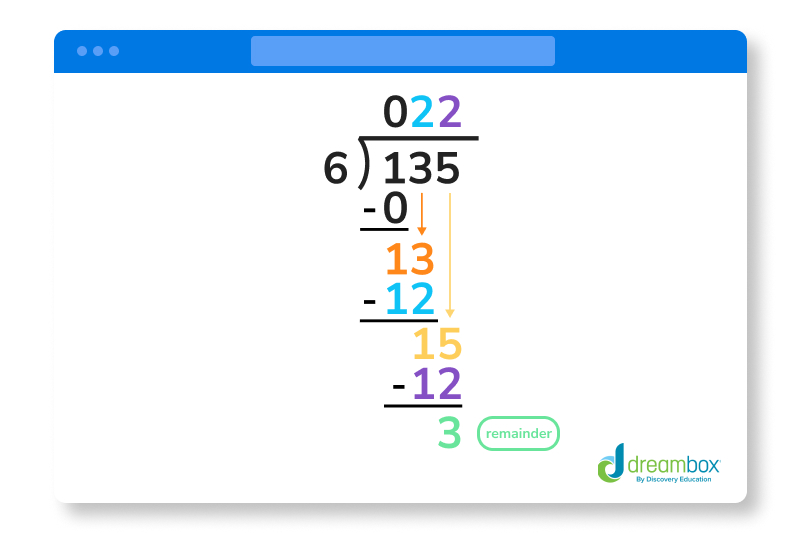
Try this!
- As your child is completing long division problems, encourage them to have a checklist of steps next to each problem. I like to write DMSBR (the acronym for the steps divide, multiply, subtract, bring down, repeat) next to every problem. Your job is to help your child stay on track. Have your child make check marks after they complete each step. I also like to draw an arrow back to the top to remind my students to keep repeating these steps in every problem.
How to teach division to struggling students
Despite your best efforts, your child may struggle to complete long-division problems. That’s why the new math method of division teaches dividing using area models. This method help your child break down large division problems into parts.
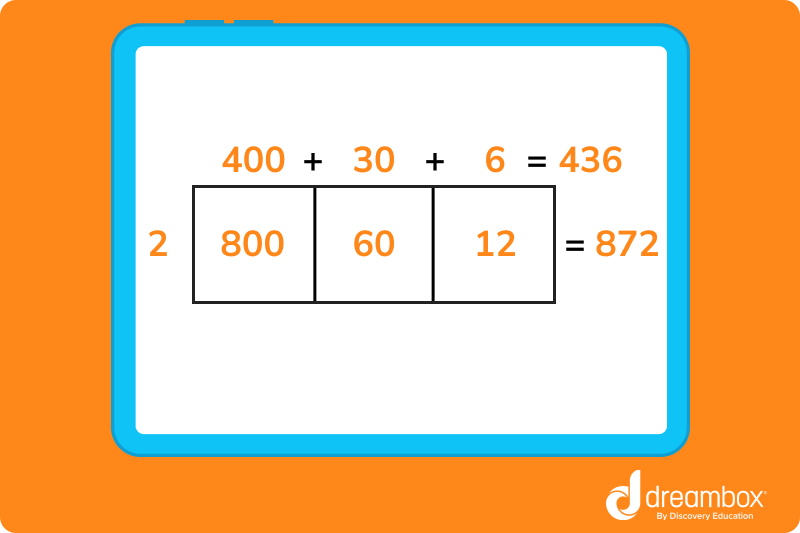
What’s next for your child in learning division?
As your child progresses, they will learn how to divide decimals, divide fractions, and divide while solving real-world word problems.
Now is the time to help your child become a strong divider!
Take at home math practice to the next level
Empowering parents and educators to make math practice more impactful. Plus, your kids will love it.


